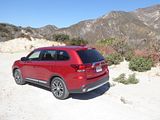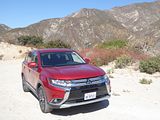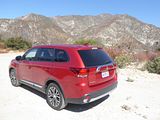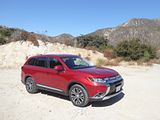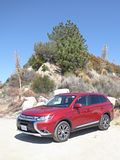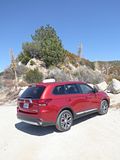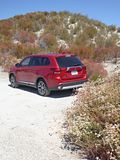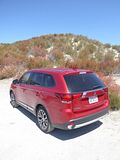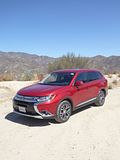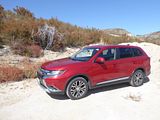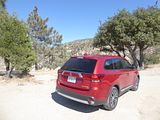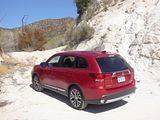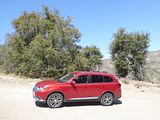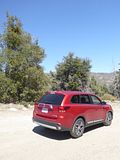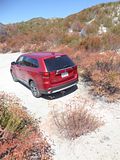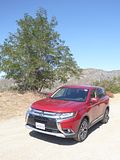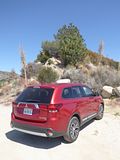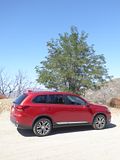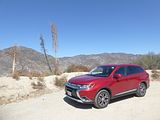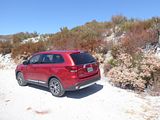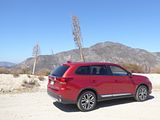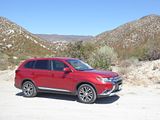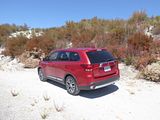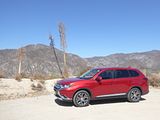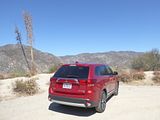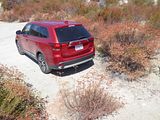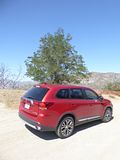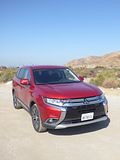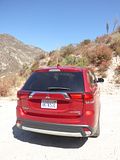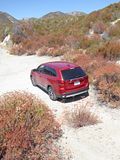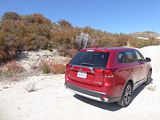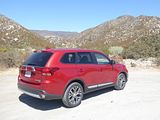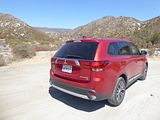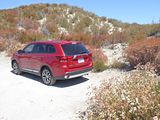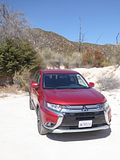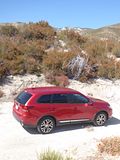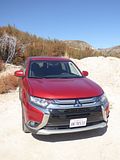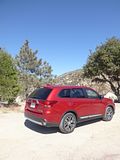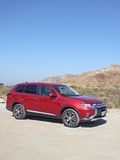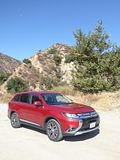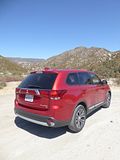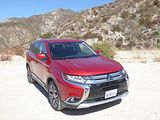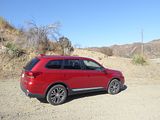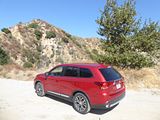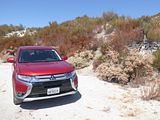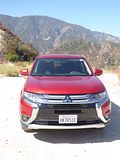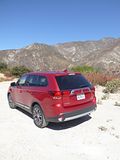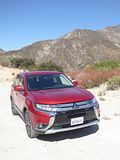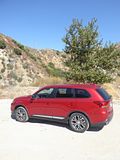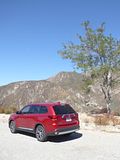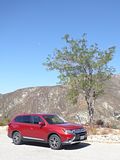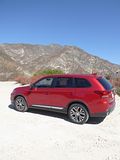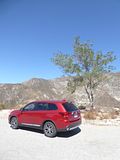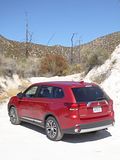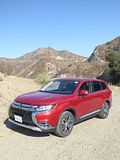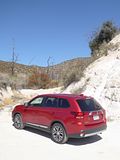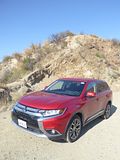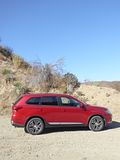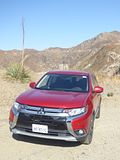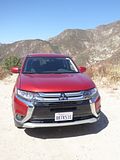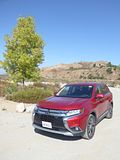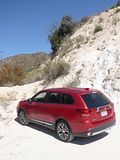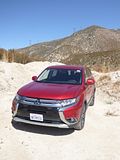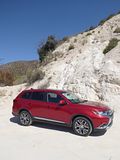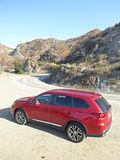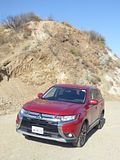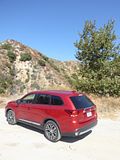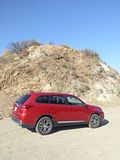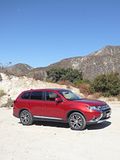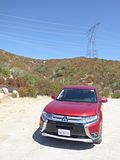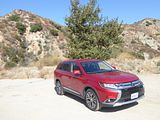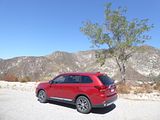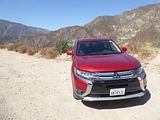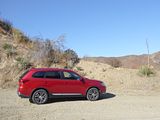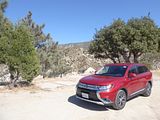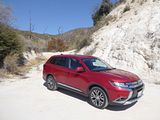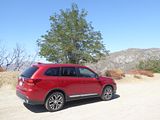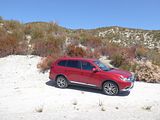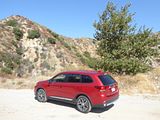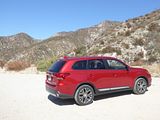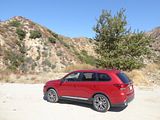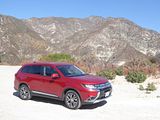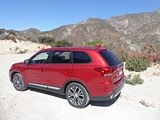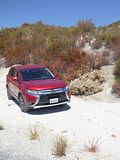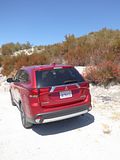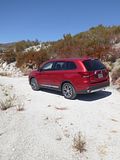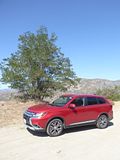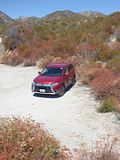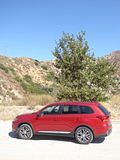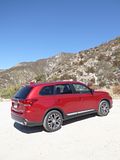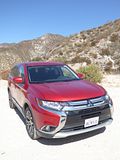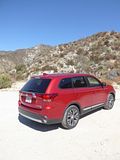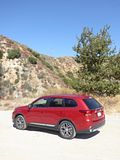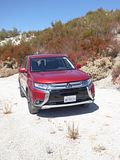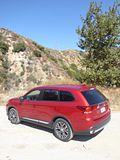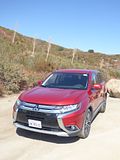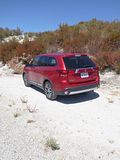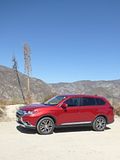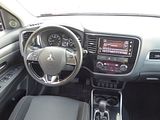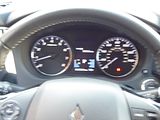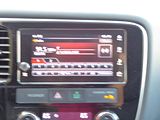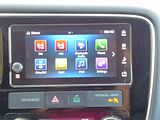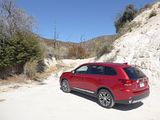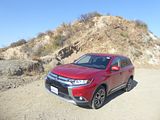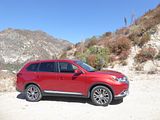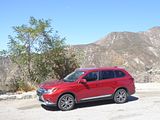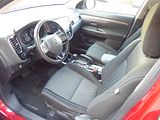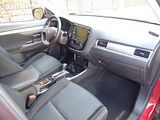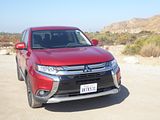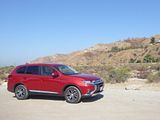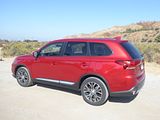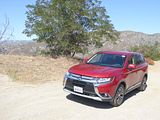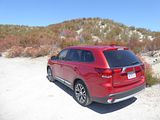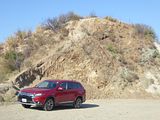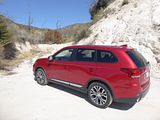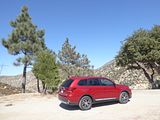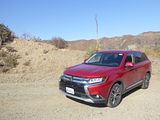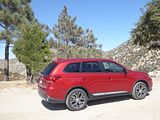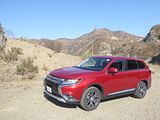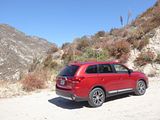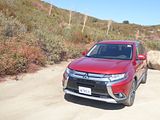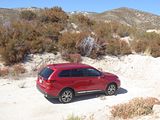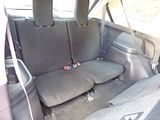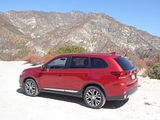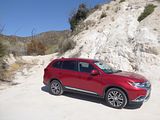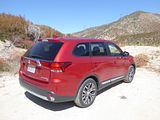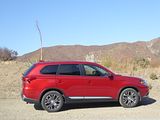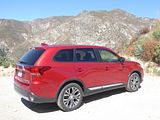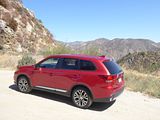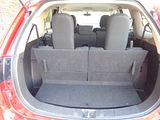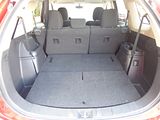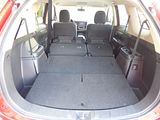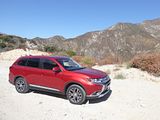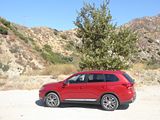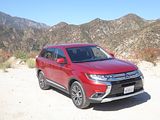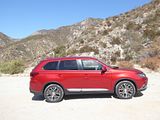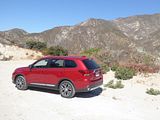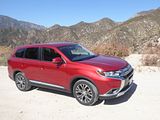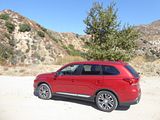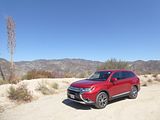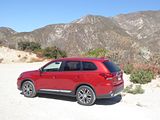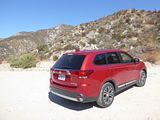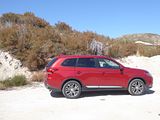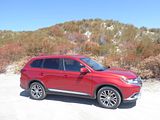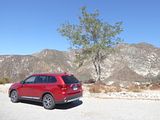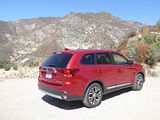Like most of the other Japanese automotive brands, Mitsubishi started building cars in the early 1960s. The first models were tiny and were solely for domestic consumption but come the 1970s as production capacity had increased, Mitsubishi started to export their cars to more and more markets around the world. They first arrived in the UK in late 1974 but the firm struggled to make a huge impact in the market for the next 25 years even though they brought a number of technical innovations to their cars such as the use of balancer shafts to improve the smoothness of four cylinder engines, an innovative dual ratio gearbox in the first Colt Mirage hatch of 1978 and widespread adoption of the turbo before everyone started doing it in the early 80s, as well as with cars like the Shogun which provided a true and better rival to the Land Rover and the Spacewagon which was an early MPV-type car before the Renault Espace really defined the genre. There had always been a rallying program and the cars performed well in places like Africa but this was raised to a new level in the late 90s with the likes of the late Richard Burns driving their cars to victory after victory in those glory days of World Rallying and the epic battles with Colin McRae and Subaru. Mitsubishi had followed a different route to the US market forming a partnership with the Chrysler Corporation who would use their own badging to sell these Japanese cars as smaller and cheaper cars than their own. That all changed when Mitsubishi wanted to sell their own cars themselves in the mid 80s but for a while there were still badge engineered versions of the cars available from your Chrysler dealer. Just as in Europe, though, although the cars were worthy enough they never quite made it to the big time and the WRC program had far less meaning States-side. When that rally program ended, Mitsubishi seemed to be struggling on both sides of the Atlantic with a smaller range of models than their rivals and no real USP. Selling on value and a reputation for doing sub-prime deals to keep sales up in the US, which is where the brand ended up was hardly a recipe for growth and profit as was discovered in the credit crunch of 2007/8 but in Europe apparent salvation came from one of those happy coincidences of timing with the launch in 2012 of the third generation Outlander. Initially this just looked like a sound but unstartling new generation version of a family-sized crossover, but a few months after launch, Mitsubishi announced the availability of a version with a PHEV option. None of its competitors could offer this at the time, and with a huge fiscal advantage, sales of the Outlander increased significantly. The Outlander PHEV ranked as the world’s top selling plug-in hybrid in 2014, and also as the third best-selling plug-in electric car after the all-electric Tesla Model S and Nissan Leaf. Global sales totalled about 42,400 units in 2015, representing 24.6% of worldwide sales of the Outlander lineup, making the plug-in hybrid for a second year in a row the world’s best-selling plug-in hybrid, and also the third top selling plug-in electric car. During 2015, the Outlander plug-in hybrid surpassed the Leaf as the all-time top selling plug-in passenger car in Europe. In 2017, the Outlander PHEV topped plug-in hybrid sales in Europe, for the fifth year running. But with a market starting to shift to fully electric cars, Mitsubishi’s market advantage could not last and with total sales volumes across the limited range of cars far lower than most of rivals. Mitsubishi has been unable to finance the development of the car or a replacement at the rate that was perhaps needed. And so, with the exception of some visual tweaks to the grille that you notice and a few other things that you don’t, the Outlander of 2019 is much the same as the one that launched in 2012.
Time was when Mitsubishi models were quite prevalent in the US rental fleets but for most of the past decade they’ve hardly featured at all. Purchase of a few of the Mirage models a few years ago did not help as this is probably the most unpleasant car on sale in the US market, but clearly a new relationship has been struck and a number of Outlander Sport have appeared in 2019 and now I notice that there are of the large Outlander on fleet as well. Ever eager to try everything that is on offer, I have been on the look out for one to sample and my chance came when I spotted one parked up at Hertz’ LAX facility, finished in a rather attractive deep red that is called Rally Red. It is categorised as a Group L car, so the same as a Ford Edge, Nissan Murano, Kia Sorento and Dodge Journey, among others. I’m not quite sure what the history of this particular car is, as the paperwork said that it was a 2018 model year car, but it was first registered in June 2019 and the plaque inside the door said that it was actually built in August 2017. As it had only covered a low mileage, I guess it had been sitting in a compound for a long time. So was that all that it deserved or did the Outlander have sufficient merit that meant it should be being used and perhaps selected over and above the long list of rivals?
In Europe, most Outlander models are sold with the Plug-In Hybrid technology but in the US until very recently they have only come with a conventional petrol engine, the PHEV model being repeatedly delayed. Top spec models have a V6 but all the rest have a 2.4 litre 4 cylinder unit that puts out 166 bhp, which does not sound a lot for what is quite a big car. I did not know this before I drove it (it’s too hard to keep all specs for all markets in my brain these days!), so I simply got in and having adjusted seat and mirrors, pressed the start button, which generated a lot of beeps and warning chimes (none of which were ones that needed any attention!) and the engine fired. First impressions are that the engine is pretty well fit for purpose. It is smooth and quiet and there appears to be enough oomph to deliver acceleration to keep up with the traffic flows. However, If you need a burst of extra speed you will have to work the engine quite hard and here is where it becomes apparent that 166 bhp really isn’t quite enough for a car of the size and weight of the Outlander. Things get much noisier and the response is not as smooth and rapid as you would hope. Published 0 – 60 times suggest that this car is among the slowest in its class and just when you most need it, you will find that it is hard work to get what is required. There is a CVT transmission and this one was one of the better ones, seemingly keeping up with what the right foot was doing both when accelerating and slowing down. I covered 167 miles in my day with this Mitsubishi and it took 5.85 gallons to refill it, which computes to 28.54 mpg US or 34.1 mpg Imperial, which is a decent result for a car of this size.
Buyers of cars of this type don’t generally expect to get something that is hugely entertaining from behind the wheel (and if they do, then a Mazda is the car for them!) and so what you get here is about typical of the class. The steering is best described as OK. It is light which makes the Outlander easy to manoeuvre but there’s not a lot of feel as to what the steered wheels are really doing. Handling is tidy at modest speeds, but go a bit more enthusiastically into the bends and there is an increasing amount of body roll and understeer is evident. The ride, on standard 225/55 R18 tyres, was well judged proving just firm enough not to wallow but still able to handle the worst of LA’s generally not very good road surfaces. There were no concerns about the brakes. Unusually, and perhaps showing the age of the design of this car, there is still a conventional pull-up handbrake between the seats. Visibility was also as good as you generally get these days, with the standard rear-view camera helping when reversing.
Mitsubishi have made great efforts in recent years to improved the quality of their interiors, and whilst still far from class-leading that of the Outlander is perfectly acceptable, with decent quality plastics and a neat design. The steering wheel and gear lever are leather wrapped making them pleasant enough to hold. I was less impressed by the fake milled aluminium effect inlays and the shiny plastic black inlays attract dust and fingerprints like they always do. Reminder that you have a model from near the base of the range is proved when you look at the number of blank switches that seem to be everywhere. The instruments are grouped together under a cowled binnacle, which is a part of a much larger cockpit style for all the controls the driver may need, with two large dials for the speedo and rev counter that are easy to read and there are small bar charts for fuel level and water temperature. Keyless starting features. There are twin column stalks with the lights operating from the left hand one and buttons on the steering wheel boss handle cruise control and audio repeater functions. The centre of the dash is dominated by the integrated infotainment screen which sits between the central air vents. At 7″, it is smaller than those which you find in more recent designs, perhaps but there is a touch interface and the system presented here was easy to use, even though there was only one physical knob. Apple Car Play and Android Auto are standard and XM Satellite radio is included in the spec, though as seem to be current Hertz policy, it was disabled in the test car unless you pay a fairly hefty daily fee to have it switched back on. Below this are a couple of dials and a series of buttons for the climate control system.
As the test car came from near the bottom of the range, it came with cloth upholstery and manually adjusted seats, though slightly oddly the SE spec includes heated seats. But the front passenger does not get a height adjuster. Combine the adjustments with a telescoping steering column and most people should be able to get comfortable and find the driving position that suits them. I certainly could. The seat itself seemed good, though I did not take this car on a particularly long journey, as I was up in the mountains north of LA and kept stopping and hopping in and out for photos.
The second row of seats are on sliders, so the amount of leg room will depend on where you position them. Pulled as far forward as they will go and there is not a huge amount of leg room, but push the seat to the rear of their travel and there is ample space for even the longest of leg. You can also vary the backrest angle. Even when set to its most upright position, there is plenty of headroom, thanks to the SUV body of the car. There is good width so three adults should fit reasonably comfortably. There is a drop-down central armrest. Oddment stowage is addressed with pockets on the doors and one map pocket on the back of the front seats.
Some will consider the selling point of the Outlander to be the fact that all models have a third row of seats, rare at this price point. Of course, the reality is that the third row is really only suitable for children. The middle row of seats tilt forward to allow access but there is more than a degree of athleticism required to get in and even more so to get out. Once installed, there is not that much legroom and anyone of adult size will find that their knees and chin are closer together than feels truly comfortable, but headroom is sufficient for all but the very tall and there is ample width.
Like all three-row vehicles, especially those of this size, the boot capacity is rather limited with the third row of seats erect. They are split 50/50, so you could drop just one seat down and still seat six. Before trying to fold the seat, you need to remove the rather large headrest then the seat simply folds down to leave a flat and quite sizeable luggage area. There is a well under the boot floor which could hold those headrests and also a few other odds and ends. If you need more carrying capacity then second row of seats fold down, too. You need to fold down the headrests, but they do not have to be removed this tie, then pull up the rear seat cushion before dropping the backrests down. The result is a long and flat load bay area. Inside the cabin, there is a split level glovebox a rather meagre armrest cubby and pockets on the doors for the inevitable odds and ends that we all want to carry around with us.
For the US market, the 2018 Mitsubishi Outla nder comes in five different trim levels: ES, SE, LE, SEL and GT. The Outlander’s base engine is a 166 bhp 2.4-litre four-cylinder engine paired with a continuously variable automatic transmission (CVT). Front-wheel drive is standard, and all-wheel drive is optional. Standard features for the ES include 18-inch alloy wheels, LED running lights and taillights, heated mirrors, rear privacy glass, cruise control, dual-zone automatic climate control, a leather-wrapped tilt-and-telescoping steering wheel, a height-adjustable driver seat, a 60/40-split folding second-row seat that slides and reclines, a 50/50-split third-row seat, a rearview camera, voice controls, Bluetooth connectivity, and a six-speaker sound system with a 7-inch touchscreen display, a CD player and a USB port. Stepping up to the SE gets you foglights, body-coloured side mirrors with integrated turn signals, keyless ignition and entry, an electronic parking brake (all-wheel drive only), heated front seats, and an upgraded audio system with satellite radio, and Apple CarPlay and Android Auto smartphone integration. The LE (Limited Edition) mostly adds a few aesthetic upgrades (such as black roof rails and black exterior trim) and also gets you blind-spot monitoring with rear cross-traffic alert. The SEL starts with the SE’s content and adds automatic headlights, power-folding mirrors, automatic wipers, gloss-black interior trim, a power liftgate, blind-spot monitoring with rear cross-traffic alert, leather upholstery, an auto-dimming rearview mirror and a power driver seat. The SEL also has some optional equipment that you can’t get on lower trim levels. The Premium package adds LED headlights and LED foglights, a sunroof, a heated steering wheel, a 360-degree parking camera system, and a nine-speaker Rockford Fosgate audio system. The SEL Touring package includes the Premium package contents plus automatic high beams, adaptive cruise control, a forward collision mitigation system with automatic braking, and a lane departure warning system. The GT comes standard with all of the above options except the advanced safety technologies, all of which are included in the optional GT Touring package. Exclusive standard features on the GT include a 224 bhp 3.0-litre V6 paired with a conventional six-speed automatic, all-wheel drive, chrome exterior beltline accents and steering-wheel shift paddles. Stand-alone options for all trims include remote engine start, a tow hitch and a rear-seat entertainment system. All trims except the ES are eligible for LED foglights and front and rear parking sensors.The plug-in hybrid Outlander is available in SEL or GT trims. In addition to the features described above for these trims, the plug-in hybrid Outlander comes with lane departure warning, forward collision warning, and adaptive cruise control. Those safety features are available in the non-hybrid SEL and GT trims as part of the Touring package.
The Outlander struck me as a perfectly pleasant and honest sort of car with only the rather weak engine being a potential concern, but otherwise having no significant failings but equally there was not much that stood out and would make you want one. Its trump card is around value and the fact that you won’t get a new 7 seater for the same price as you would pay for one of these. But given that most people who want a 7 seater also want luggage space, the market interest in cars of this size with 7 seats is not that great, so perhaps it is not a surprise that the Outlander is not a huge seller in the US. A further challenge is that the Mitsubishi badge hasn’t got much in the way of brand equity, with a reputation of being the car for those who can’t afford anything else, so the badge snobs would probably actively not want such a relatively costly car with a Mitsubishi badge on it, And that could be the reason why this test car had clearly spent at least 12 month sat around not being used by anyone. Unloved, until someone at Hertz made an offer that could not be refused to buy it and a good few other Outlanders. It actually deserves better than that, but with so many excellent rivals in this size and class, I think it is going to have a hard time to attract buyers on a big scale.



